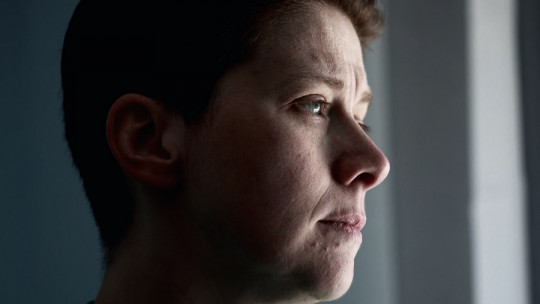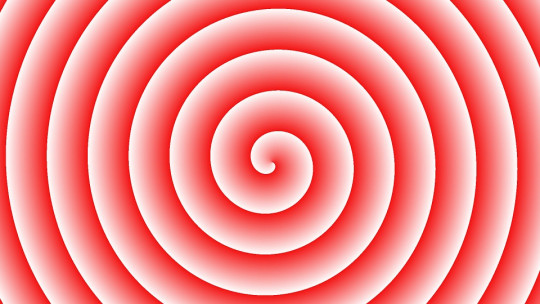
Traumas are hidden between layers and layers of repression, imposed by the same person who experienced them to ensure that these experiences do not harm them. If he does not remember them, he believes, unconsciously, that he will not feel them again.
The problem is that not being aware of a memory from the past does not mean that it cannot continue to hurt us. It does this to us, it makes it impossible for us to lead a normal life and it can even cause us psychological and physical problems.
Abreaction is the process by which a repressed memory is brought to the plane of consciousness.as if it were fishing for memories.
This process can be very disturbing, in the sense that when recovering the traumatic memory, the emotions associated with it also come to light, but it also provides the opportunity to confront that traumatic experience.
What is abreaction?
From psychoanalysis, abreaction is the discharge of emotions and affects associated with difficult memories, generally painful and traumatic childhood experiences.. In a therapeutic context, this phenomenon involves making the patient relive painful situations, making repressed memories go to a conscious level. Through verbalization and other behavioral or gestural expressions, the traumatic memory will be worked on and the emotional tension linked to it will be released.
The origin of the term comes from the Austrian doctor Sigmund Freud and the Austrian doctor Joseph Breuer. This is the translation of the neologism “Abreagieren”, made up of the German words “reagieren”, to react; and the prefix “ab”, which in this case is the equivalent of the Spanish prefix “des”.
In its most original sense, the word “abreaction” would be understood as an emotional discharge through which an individual is freed from emotions as a reaction to a traumatic memory, which prevents it from becoming or continuing to be pathogenic.
It is proposed that abreaction is a mechanism that is not only normal in the processes of recovery from psychological trauma, but also necessary. Through this, an affect is discharged that psychoanalysis defines as “strangled”, which means that a repressed and complex emotional state is released and brought to consciousness so that the patient can, precisely, consciously work with it.

Freud and Breuer considered that recovery does not occur only by expressing or reliving emotions.. That is to say, bringing the repressed memory to the conscious level is not enough to help the patient and provide him with greater well-being and adaptation to his social life. Those who have experienced a trauma must not only know what it is, but also confront it, understand it and work on all the emotions it awakens, the same emotions that have been eating away at him inside even though he himself has not been aware of it.
When a patient remembers a past trauma, that memory and the emotions it awakens must be carefully analyzed. The mental health professional must accompany the patient throughout the entire process, helping them integrate experiences, reasoning ideas, thoughts and emotions so as not to intensify the pain even more.
Traumas are always there
In psychoanalysis it is considered that a trauma always leaves clues. This traumatic memory is latent in the brain, altering the patient’s way of reacting to stimuli, relating to others and perceiving themselves. Traumatic events, despite being hidden in the depths of your mind, affect everything and increase the risk of suffering from a health problem in adulthood.
It is no secret that people who experienced traumatic experiences in their childhood are at greater risk of presenting in adulthood with problems ranging from chronic physical pain to mental disorders of all kinds, including anxiety, depression, or even depression. schizophrenia.
Even if a disorder does not manifest itself, there is no doubt that having experienced extremely stressful and threatening situations in childhood will take a toll on mental health, even if they are not consciously remembered. And on top of that, the brain has the ability to link any stimulus present with the threat that was once experienced as truly terrifying.
These stimuli can be totally harmless things, but they remind us of truly stressful moments. A smell, a sound or an image can take the patient to their past, causing a repressed memory to come to light, that is, an abreaction. It is at that moment when emotions arise, causing tears to appear, tremors to appear, a feeling of insecurity… It may become blocked.
On the other hand, when abreaction appears during therapy, in a controlled space, this phenomenon is a true opportunity to combat trauma in its entirety. In therapy, the patient can be helped to remember more events and verbalize the entire traumatic memory. Through the psychologist’s guidance, a highly disturbing and problematic memory can be transformed into a healthier and better controlled state.
The abreaction: from an obstacle to a therapeutic tool
There are two types of abreaction: planned and spontaneous.. The spontaneous abreaction is the one that arises casually as a result of stimuli linked to the trauma, while the planned abreaction is the one that is induced in an organized way, normally facilitated by the psychologist in the middle of the therapy. It is this second one that acquires therapeutic power, not on its own but thanks to the help of the psychologist who acts as a guide during the process and can help the patient face the painful memory.
One of the most suitable techniques to produce abreactions is EMDR (eye movement desensitization and reprocessing). The goal of this therapeutic approach is to convert dysfunctionally stored information into a more integrative, less pathological, and more emotionally manageable memory. The psychologist will take the role of providing the patient with constant support and security so that, from a professional but compassionate distance, the recipient of the therapy can acquire a certain degree of control of the memories of it, reformulating ideas, beliefs and emotions.
Two things can happen during the abreaction process. The first is for the patient to carry out a dissociation, activating the psychological mechanism that makes you disconnect your mind from reality because the emotional pain is so great that you cannot handle it and you make use of this resource. The second is to carry out an entire exercise of catharsis, and release everything that has been repressed, gaining well-being and acquiring a powerful tool to face the painful emotions that you have experienced in the silence of your subconscious.
In fact, Freud uses the term “abreaction” as a replacement for catharsis., a word of Greek origin that means both “purge” and “purification”, referring in this case to the fact that the patient, if achieved, is freed from all emotional tension, “cleansed” of bad emotions. Although the memory will still be there, the painful emotions it provoked will no longer manifest and it will no longer hurt you. The problem is externalized, represented outside, which makes the person who had it inside relieve it.
Thus, from psychoanalysis it is pointed out that abreaction can be a truly useful tool in the context of therapy, as long as it is controlled at the moment of appearance. Patients’ traumas can only be worked on when they are aware of them, identify what exactly happened, what emotions it produces in them, and work on the beliefs around them. Making what has been repressed come to the level of consciousness is a fundamental task in any therapeutic process, since only by ensuring that the patient manages to control and understand the trauma will they be able to acquire more mental health and emotional well-being.








